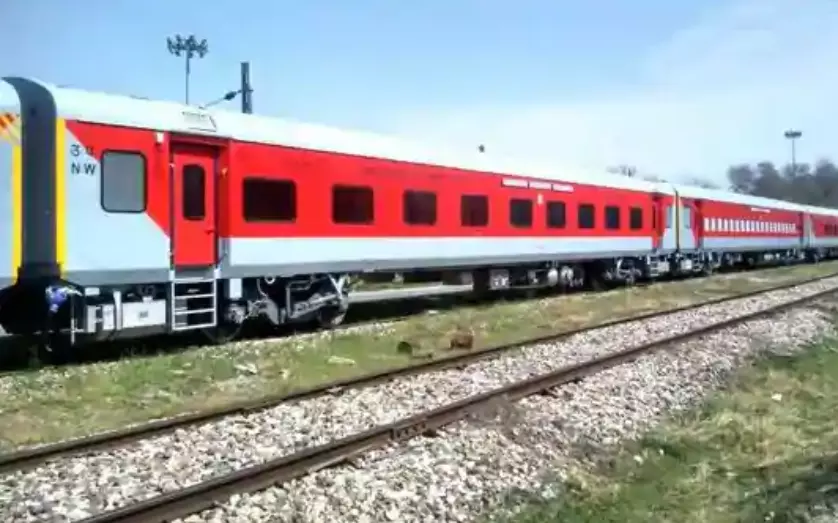
TN train crash fallout: Railway Board initiates 15-day drive to inspect interlocking points
The drive has been initiated almost a fortnight after a passenger and freight train collision in TN; initial probe shows possible sabotage or mechanical defect in interlocking system

New Delhi, Oct 25 (PTI) The Railway Board has initiated from October 23 a 15-day-long safety drive to inspect interlocking points and crossings across all rail networks in the country.
In a written communication, the board has asked all railway zones and divisions to undertake the drive with a special emphasis on critical analysis of cases of derailment at these intersections in the last three years among other aspects.
The drive was initiated almost a fortnight after a collision between a passenger and a freight train in Tamil Nadu. The incident is being investigated as initial findings hinted at an act of sabotage of the interlocking system or a possible mechanical defect in it.
According to the board's letter, the officials should check if the interlocking points require frequent attention, their behaviour under the wheels of a train and also ensure the adequate availability of their components among other things.
The board has also advised a "sample audit of newly supplied tongue rails and crossing" and an inspection of the "condition of switches".
"All points and crossings are to be covered under this safety drive. Officers of departments from HQ (Headquarters) should also be involved. Effective action must be taken on all deficiencies and irregularities noticed during the drive," the letter dated October 23 read.
Asking all the zones and divisions to send a daily report to the Safety Control department of the board, the letter directed the principal chief safety officers "to critically analyse complete shortcomings to identify systematic deficiency and action taken/planned to be taken" and send a report to the board by November 13.
Safety experts say that it is the first-of-its-kind drive in which officials have been asked to observe the behaviour of the interlocking points under the wheels among other issues.
According to them, the drive was prompted by the recent collision between a freight and passenger train in Tamil Nadu. Some experts believed that there was a mismatch between the signal aspect and interlocking point due to which the train, instead of going on the main line, diverted towards the loop line and rammed into the stationary freight train.
The Indian Railway S&T Maintainers' Union (IRSTMU) has welcomed the board's initiative and urged that such practices should be held on a regular basis.
"It is a very good initiative. It will improve the conditions of the most important and significant aspects of the signal and telecommunication and engineering departments," Alok Chandra Prakash, general secretary of the IRSTMU, said.
"Pointsmen have the duty to look at the points, remove obstruction if found and lubricate them for proper functioning. However, they as well as the engineering staff are not doing this properly due to which all the burden of maintenance falls on signal and telecommunication staff," he added.
Prakash said, "The IRSTMU has also raised the issue that proper time for maintenance of these gears is not being given. There are many cases of clashes between signal and telecommunication staff and station masters only due to operation of points and disconnection for maintenance." On October 11, the Mysuru-Darbhanga Bagmati Express rammed into a stationary goods train at the Kavaraipettai railway station near Chennai, raising several questions about the reasons for the collision.
While a three-member expert committee hinted that the interlocking point might have been sabotaged, a joint probe report of seven railway officials did not support it and suggested that the train might have first derailed at the interlocking point and then dragged ahead due to its speed to hit the goods train standing at the loop line.
"While multiple probes are on to find out whether the accident was caused by an act of sabotage or shortcomings in the signalling system, the Railway Board has taken the right initiative to carry out safety checks of all interlocking points to avoid recurrence of any such accident due to malfunctioning in the signalling system if any," a railway safety official said. PTI

